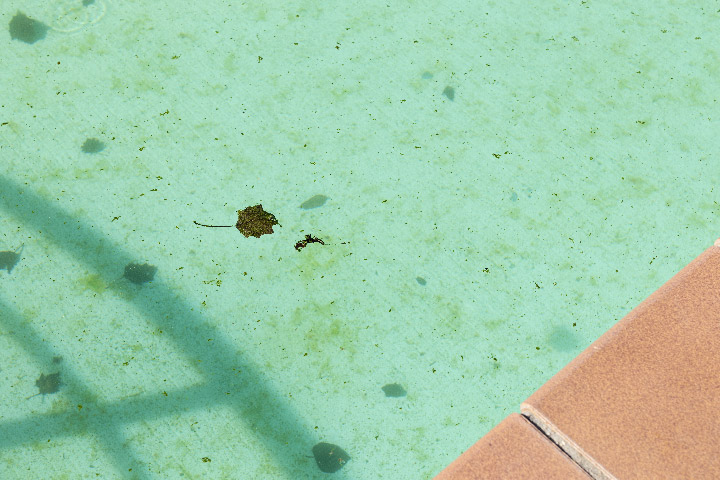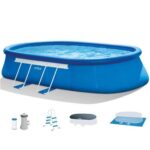
Managing Cloudy Pool Water After Rain: A Homeowner’s Guide
Rain can be a delightful and refreshing break from the summer heat, but it can also bring challenges for swimming pool owners. When rainwater enters your pool, it can cause your pool water to become cloudy or discolored. But don’t worry – with the right steps and precautions, you can quickly clear up your pool and get back to enjoying it. In this article, we’ll discuss why rain can cause cloudy pool water, and provide some helpful tips for managing it.
Why Rain Causes Cloudy Pool Water: Rainwater can introduce a variety of contaminants into your pool, including dirt, debris, and algae spores. These contaminants can upset the balance of your pool’s water chemistry, leading to cloudiness and other issues. Additionally, rainwater is often acidic, which can lower your pool’s pH level and cause further cloudiness.
Steps to Manage Cloudy Pool Water After Rain:
- Remove Debris: The first step to clearing up your pool after rain is to remove any debris that may have entered during the storm. Use a pool skimmer or vacuum to remove leaves, twigs, and other debris from the water.
- Test Water Chemistry: Test your pool’s water chemistry, including pH, alkalinity, and sanitizer levels. Rain can affect these parameters, so it’s essential to check them and make any necessary adjustments.
- Adjust pH and Alkalinity: If your pool’s pH level has dropped due to rainwater, you’ll need to raise it back to the ideal range of 7.4-7.6. You can use pH increaser (sodium carbonate) to accomplish this. Additionally, if your alkalinity is out of balance, use an alkalinity increaser (sodium bicarbonate) to bring it back to the recommended range of 80-120 ppm.
- Shock Your Pool: Shock your pool with a high dose of chlorine or a non-chlorine shock product to eliminate contaminants and restore water clarity. This will help to break down organic materials and kill any algae spores that may have been introduced by the rain.
- Run Your Pool Filter: After shocking your pool, run your filter continuously for at least 24 hours to help clear up the water. This will help to remove any remaining contaminants and improve water clarity.
- Use a Clarifier or Flocculant: If your pool is still cloudy after following the above steps, consider using a water clarifier or flocculant to help improve water clarity. These products work by clumping small particles together, making it easier for your filter to remove them from the water.
- Regular Maintenance: To prevent future issues with cloudy pool water, establish a regular maintenance routine. This should include skimming and vacuuming, maintaining proper water chemistry, and cleaning your filter regularly. By keeping up with routine pool care, you’ll be better prepared to handle any challenges that rain may bring.
Conclusion: Dealing with cloudy pool water after rain can be frustrating, but with the right steps and precautions, you can quickly clear up your pool and get back to enjoying it. By removing debris, testing and adjusting water chemistry, shocking your pool, and running your filter, you can restore your pool’s clarity and maintain a healthy swimming environment. Remember, regular pool maintenance is key to preventing future issues and ensuring a safe, clean, and enjoyable pool experience for you and your family.




